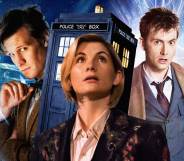The Last of Us fought back against the painful Bury Your Gays trope. It paid off
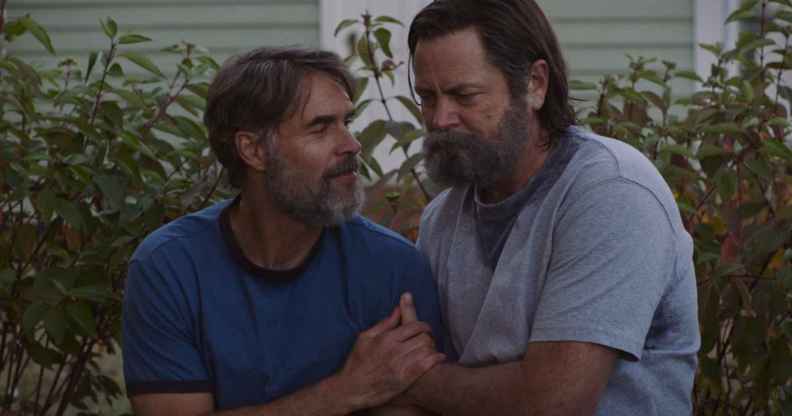
Nick Offerman as Bill and Murray Bartlett as Frank in The Last Of Us (HBO)
HBO’s new adaptation of The Last of Us digs deep to reimagine the story of Bill and Frank – and in doing so, subverts a longstanding pop culture trope, writes PinkNews’ entertainment editor Christobel Hastings.
Spoilers follow for the third episode of The Last of Us, ‘Long Long Time’, which premiered on HBO on 29 January, 2023.
If television’s new Golden Age is proving anything right now, it’s that quiet small screen moments are very often the most powerful. Take HBO’s new series The Last of Us, which is currently producing plot twists so shocking, they’re becoming worldwide talking points within hours of airing. Forget swarms of scarlet-eyed monsters and writhing bodies in dark alleyways: in this hellscape, a mass of fungal tendrils unfurling from a corpse’s mouth is infinitely more horrifying than the undead feasting on human flesh.
Based on the landmark 2013 video game, Craig Mazin and Neil Druckmann’s new adaptation is set twenty years after a parasitic outbreak has infected the human race and turned most of the world’s population into zombie-like monsters. In the midst of it all is Joel (Pedro Pascal), a smuggler tasked with escorting Ellie (Bella Ramsey), a teenager seemingly immune to the virus that has toppled the world order, across a post-apocalyptic United States. In the past two episodes, we’ve witnessed the fall of civilisation, devastating loss, and an existential question that is arguably harder to stomach than a mutant fungus bursting forth from a body: carrying on when the unthinkable happens.
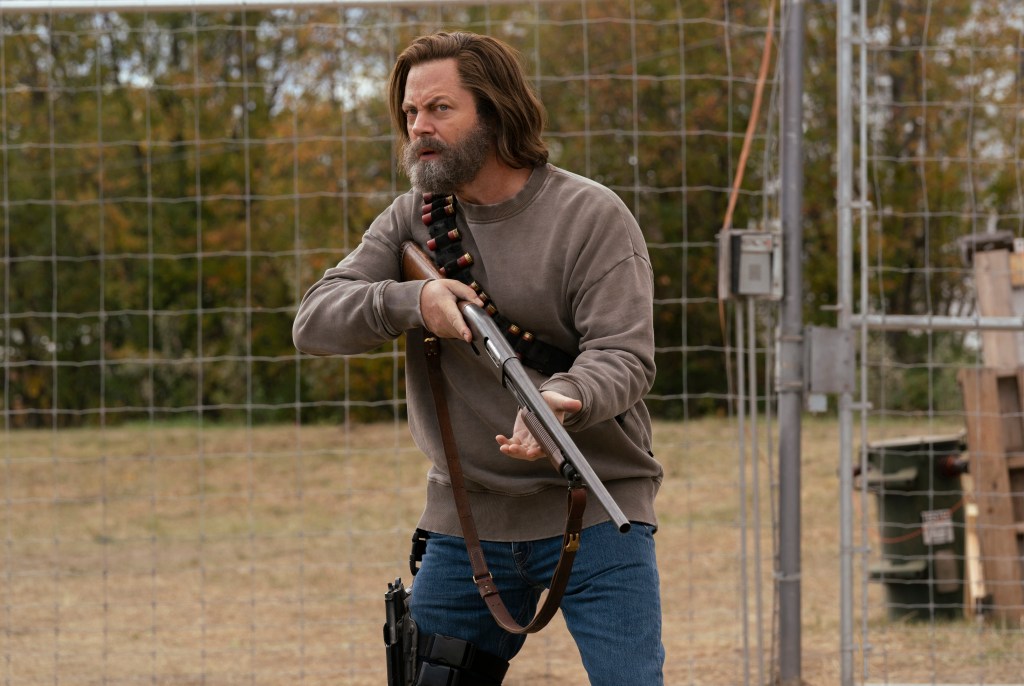
But everyone in The Last of Us is living on borrowed time, and this is at the forefront of our minds as we continue the journey in episode three, Long Long Time. Following Tess’ plea to “set everything right, all the shit we did” before making a last stand against a stream of Cordyceps-infected, we now verge away from Joel and Ellie’s quest to reach the western outpost of the resistance movement known as the Fireflies, travelling back in time to explore the story of Bill (Nick Offerman) and his partner Frank (Murray Bartlett).
We first meet Bill in his underground bunker surrounded by dozens of CCTV cameras and a fair bit of ammo. It’s the beginning of the outbreak, and in the town of Lincoln, Massachusetts, the army is evacuating civilians. Our grumpy survivalist has other ideas, though. “Not today, you new world order jackboots,” he growls as the tanks roll away, before springing gun-first into action and taking full control of the town. It turns out he’s entirely right to be suspicious when a chilling flashback shows a tattered bib lying in a mass grave on the outskirts of town – the same one worn by a baby who was supposedly rescued on outbreak day.
“Our grizzled hero is quite possibly the only person prepared for an apocalypse”
From hereon in, Mazin and Druckmann lean fully into Bill and Frank’s expanded storyline. Our grizzled hero, we quickly learn, is quite possibly the only person prepared for an apocalypse. In his safe haven, Bill is not only surviving, but thriving, enjoying creature comforts that the outside world has long forgotten: hot showers, homegrown vegetables, vintage wine purloined from the abandoned store nearby. His bubble is burst by the arrival of Frank, who falls quite literally into one of Bill’s traps on the perimeters of his property. Having been on the run, Frank is famished; but Bill is indifferent to his request to stay for a meal before continuing on his way. “Here’s the thing, Frank,” he declares. “If I feed you, then every bum you talk to about it is gonna show up looking for a free lunch. And this is not an Arby’s”. It only takes one joke to melt Bill’s gruff exterior, though, and before long, he’s laid out a set of clean clothes and cooked an impressive meal for the wearied traveller.
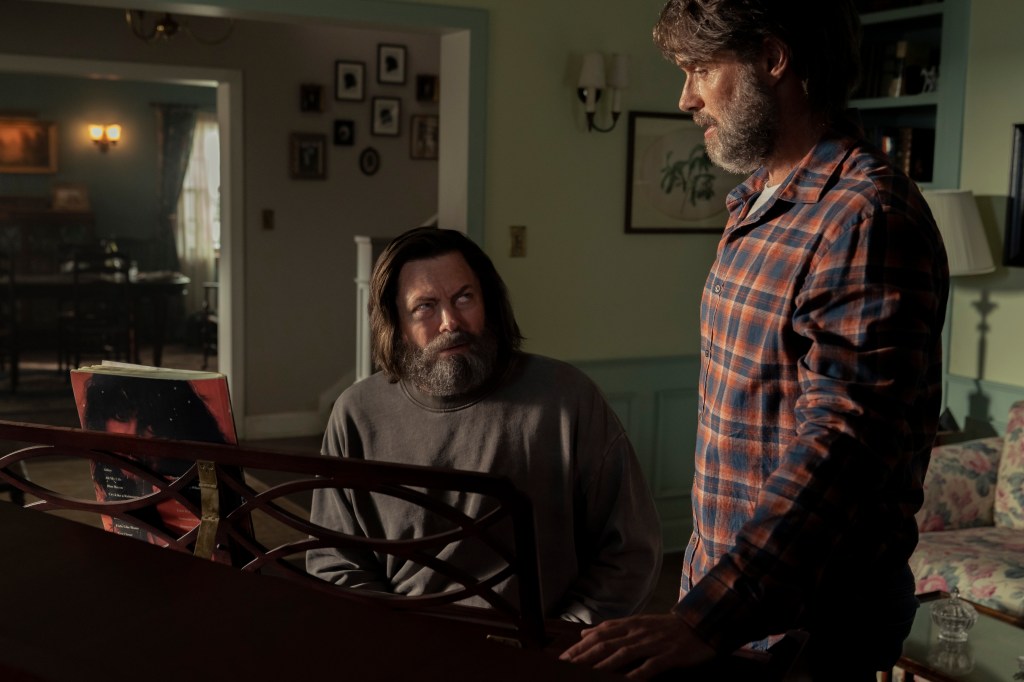
Just as escaping FEDRA’s quarantine zone and Tess’ final sacrifice become powerful acts of resistance in the series, Bill and Frank’s love story is a statement of free will in the face of a world which seeks to suppress individuality, whether by the forces of a military dictatorship, or a fungus that renders its host completely blind. In this case, it’s a moving rendition of Linda Ronstadt’s Long Long Time that sets in motion a beautiful partnership, and carves out optimism in a world defined by suffering.
As promised by Mazin and Druckman,, the couple’s relationship has indeed been given “room to breathe” in episode three. As Bill fights to protect his lover from the threats of the outside world – including one heart-pounding sequence in which the pair fend off armed raiders – the ever-jovial Frank brings colour to Bill’s life, restoring the local boutique, planting flowers and forging an friendship, albeit it an uneasy one, with Tess and Joel. There’s a scene where the pair bicker about ‘resource management’ after Frank expresses a desire to use a can of paint, which is so ridiculous in the grand scheme of things that you can’t help but smile. Another scene where Frank surprises Bill with a bed of homegrown strawberries has Emmy recognition written all over it.
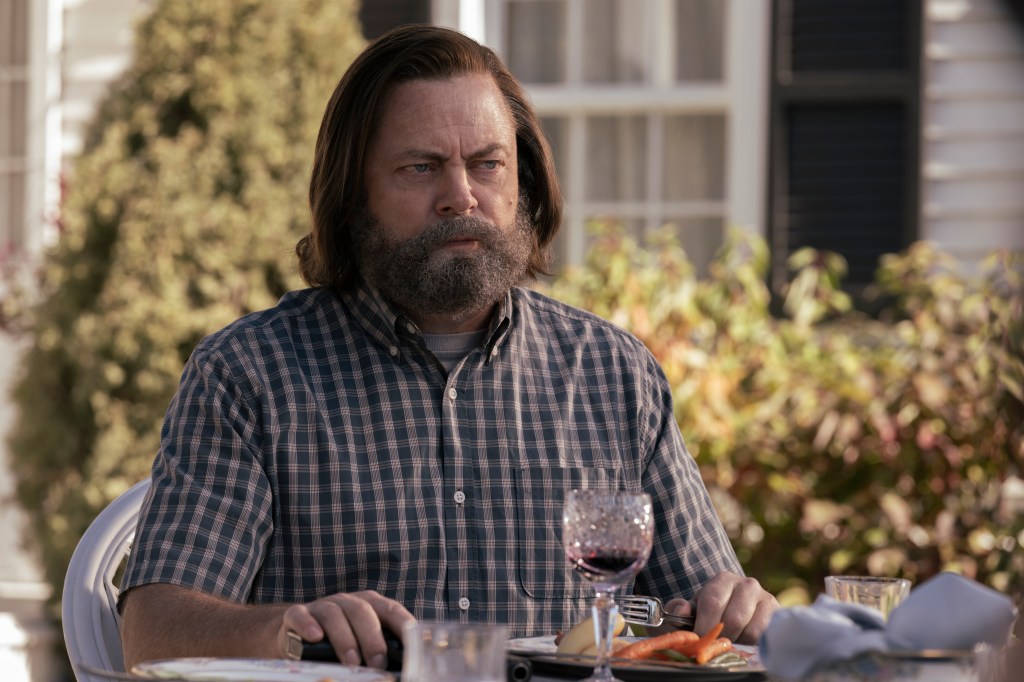
If you’re familiar with the video game, then you’ll know that a happily ever after is not on the cards for Bill and Frank. Unlike the original story, however, in which Frank becomes infected and kills himself to save Bill, the circumstances of his demise in the show are uniquely different. As the years go by, we find Frank deteriorating from a degenerative disease, which ultimately leads him to ask Bill’s assistance in committing suicide. Naturally, Bill is horrified by the nature of such a request, but concedes after Frank requests to “love me the way I want you to”. The couple then go ‘shopping’ at the local boutique, exchange vows, and enjoy a beautiful last meal, after which Bill empties a bag of crushed pills into Frank’s wine.
Except Bill has other ideas. “This isn’t the tragic suicide at the end of the play,” he declares after Frank twigs that he’s also downed a fatal concoction. “I’m old, I’m satisfied, and you were my purpose”. Some time after, Joel and Ellie arrive on the scene, only to find a neglected house and a missing couple. A handwritten letter then reveals that Bill and Frank have taken their lives in the bedroom. ‘I used to hate the world, and I was happy when everyone died,” Bill writes. “But I was wrong. Because there was one person worth saving. That’s what I did. I saved him, then I protected him”.
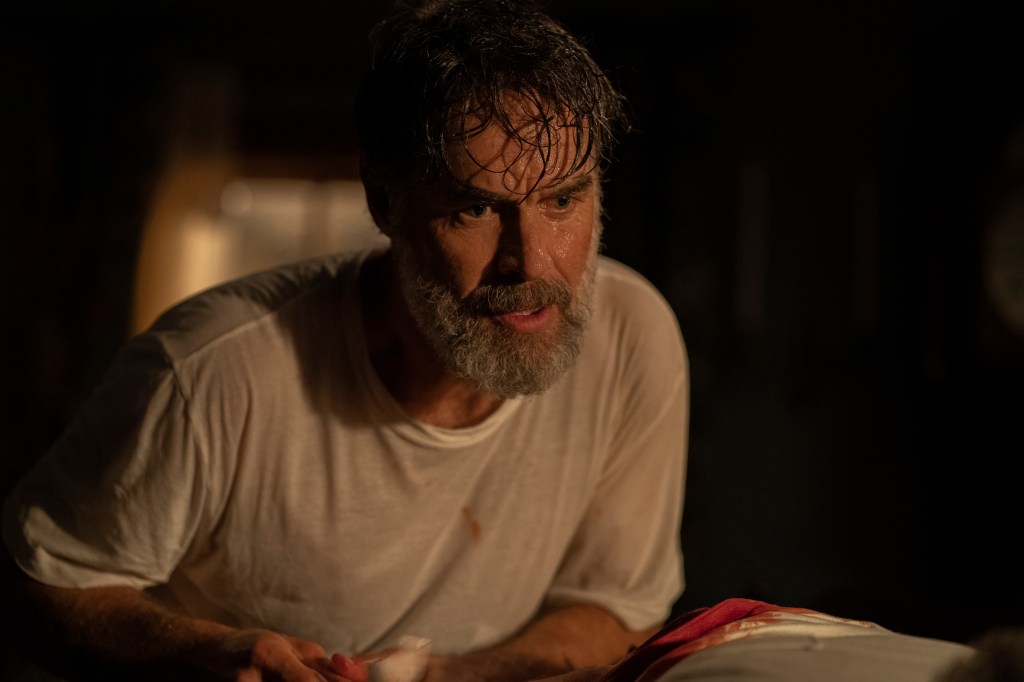
While Bill and Frank’s demise is undoubtedly tragic, the nature of their death in The Last Of Us flips the script on the pervasive pop culture trope of ‘bury your gays’, in which queer characters are killed off at a disproportionate rate, often in needlessly brutal ways. Here, there is no suffering, and no struggle. They do not succumb to infection, nor are they executed. They depart the world together, in love, and on their own terms.
“Bill and Frank’s love story shows that a television adaptation, when done well, can add nuance in a way that fundamentally enriches the original narrative”
It’s fitting, then, that the last we see of Bill and Frank is the pair exchanging a loving look before heading to bed to fall asleep in each other’s arms. While there’s been much praise of the way The Last Of Us has faithfully translated scenes from the original game, it’s a revelatory choice that the creators have departed from the source material in order to imagine Bill and Frank’s story. Choice, or the lack of it, ultimately sits at the heart of the show. Would a shot-for-shot remake of Frank’s death be necessary onscreen? Hardly. Violent, definitely.
Mazin seems to understand this, too. Having previously emphasised his desire to ‘outdo expectations’ in the show rather than subvert them, the invention of Bill and Frank’s love story shows that a television adaptation, when done well, can add nuance in a way that fundamentally enriches the original narrative. There’s perhaps no better proof of this than the final shot of the episode, where we see the curtains wafting in the breeze of the open bedroom window. The Last of Us took a risk on giving its gay couple a new narrative. It could be well be the story that comes to define the show.
Episodes 1-3 of The Last of Us are available to watch now on HBO in the US and Sky/Now in the UK
How did this story make you feel?
